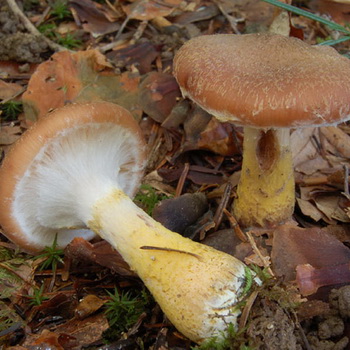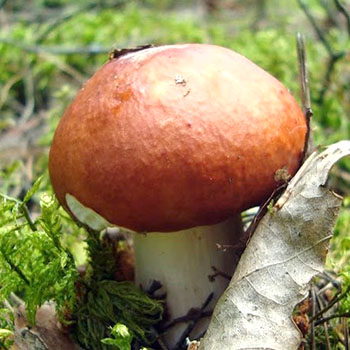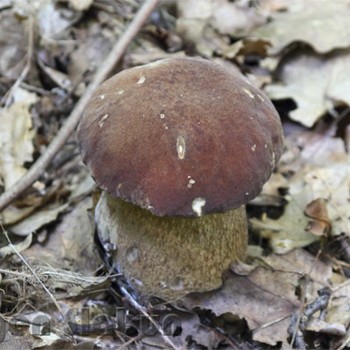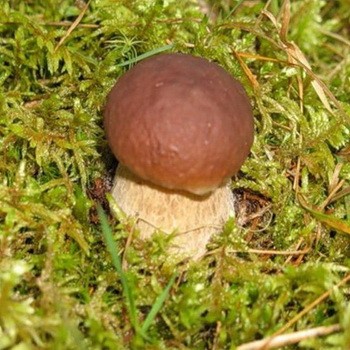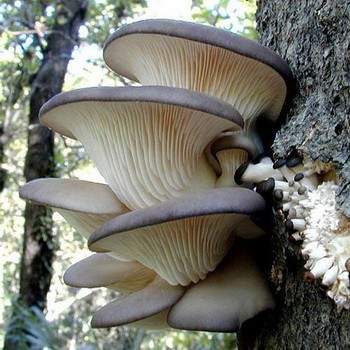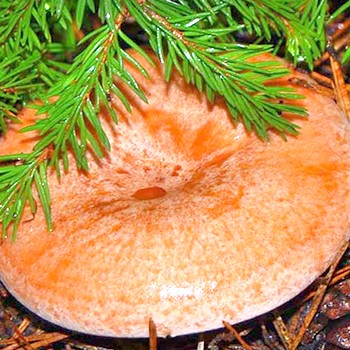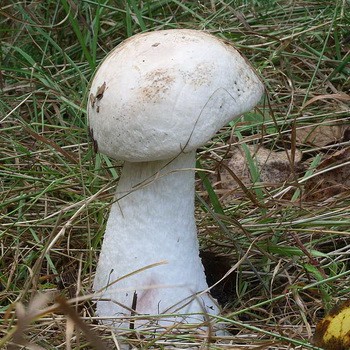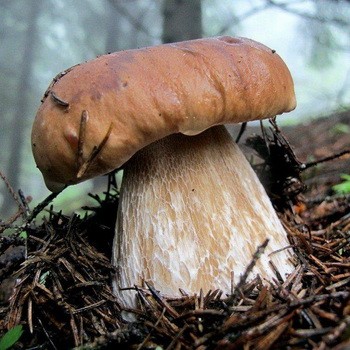Characterization of the main ecological groups of fungi
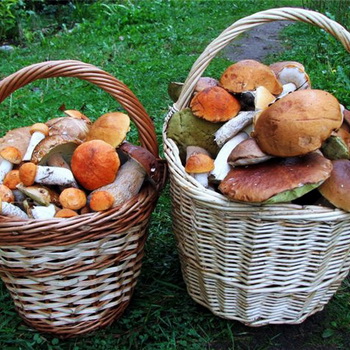
Content
How mushrooms grow (with photos and videos)
Mycelium and mycelium Are synonyms denoting the vegetative part of the fungus, which is located in the ground, in forest litter or in another substrate. The mycelium is a network of long threads called hyphae. Champignon mycelium looks like a pale bluish cobweb. Oyster mushroom mycelium resembles white silk from fine threads, and shiitake mycelium resembles white fluff or thin silk fabric. In ringworm and other litter fungi, mycelial hyphae are thicker, they look like harsh strings.
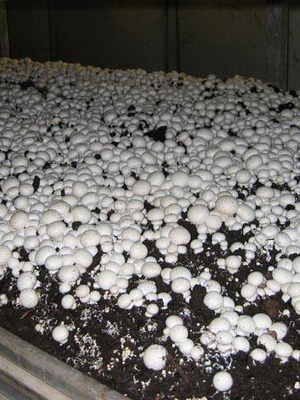
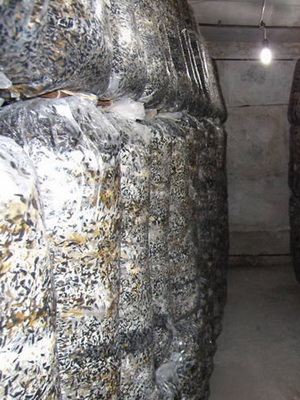
In the practice of growing mushrooms, mycelium is also called a substrate mastered by the fungus, intended for the vegetative propagation of mushrooms. This can be a packaged non-sterile substrate mycelium or “sterile” grain mycelium. Grain mycelium is a boiled and sterilized grain (wheat, barley or millet), mastered by the mycelium of the desired fungus in sterile conditions.
Using a set of enzymes, the mycelium decomposes the polysaccharides of the substrate, consumes atmospheric oxygen and at the same time emits carbon dioxide, water and heat.
Forest litter or a bed in which the mycelium of mushrooms develops, constantly increases its moisture and heats up.
After the mycelium has mastered most of the substrate available to it, the formation of the beginnings of fruiting bodies begins. The transition of the mycelium from the stage of vegetative growth to the stage of fruiting is facilitated by a decrease in air temperature, depletion of readily available nutrition in the substrate and obstacles to the spread of mycelium. So, fruiting bodies often form near mechanical obstacles, paths, or other soil compaction that impede the growth of mycelium.
Mycelial hyphae can be combined into thick cords, on which small nodules are formed - the rudiments of fruiting bodies. There can be a lot of such rudiments, but only those rudiments that evaporate water with the desired intensity can grow and turn into fruiting bodies. The fact is that mushrooms (fruiting bodies), unlike plants, can grow only due to the evaporation of water from the surface of the cap. Evaporation causes the entry of new portions of nutrients from the mycelium under the influence of osmotic pressure. Even at 100% humidity, evaporation of water from the surface of the fungus occurs if the temperature of the fungus is higher than the ambient temperature. Therefore, the fruiting bodies of mushrooms grow most rapidly in the night and morning hours, when the temperature of the air and the upper layers of the soil decreases. The presence of a temperature gradient in the soil allows the fungus to raise the substrate layer with its hat and crawl out.
Consider the growth of the fruiting body of the fungus by the example of a ring. First, more often in the morning, a layer of wood chips rises, then a round shiny damp hat with a diameter of 3-5 cm appears. The lower part of the cap is connected by a bedspread with a leg. At this stage, the mushroom is ideal for freezing and cooking. After 6 hours, the hat has a size of 7-12 cm, the shape is convex. White plates are revealed, the mushroom has a dense texture and good taste. By evening, the plates begin to acquire a gray-violet hue, and by morning of the next day they turn bright purple. Leaves and grass near the fungus are already covered with well-visible spore powder. The stage of biological maturity came, when the spores matured, the hymenophore began to dust with spores. At this stage, the mushroom is suitable only for frying.
Look at the photo how the ring mushrooms grow:
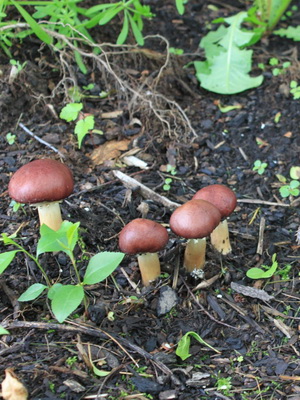
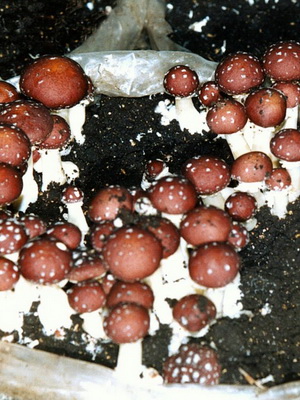
For the reproduction of fungi with the help of spores, it is not necessary to make a spore imprint, as is customary in mycological laboratories. For sowing spores, you can use water with spores washed from mature hats, or pour a suspension of particles with spores obtained by grinding the hymenophore. Gimenofor - This is the bottom of the mushroom cap in the form of plates or tubes.
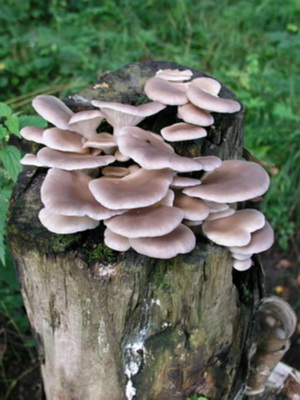
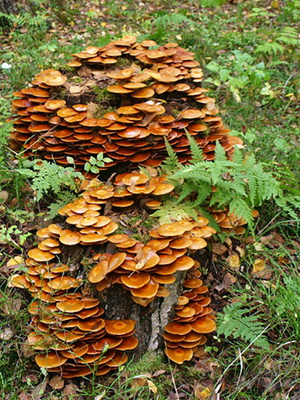
For oyster mushrooms (Pleurotus ostreatus) and summer mushroom (Kuehneromices mutabilis) you can simply spread the spore-bearing caps of mushrooms on a cut of a wooden block for sowing. It should be noted that during the "sowing" of fungi by spores, hybrid properties do not retain all the properties. So, when a hybrid strain of oyster mushrooms (NK-35) was distilled in the garden, Florida oyster mushroom grew on nearby willows. This is one of the "parents" of the hybrid.
You can see how mushrooms grow in the video below:
Next, you can familiarize yourself with the classification of the main groups of mushrooms and their characteristics.
Where and how edible tree mushrooms grow (with photo)
What groups are mushrooms divided into and what is their difference? The main groups of fungi include wood, litter, humus and mycorrhiza.
Edible woody are called mushrooms that grow in nature on trees and stumps. Their mycelium is not located on the roots of trees, but under the bark or inside the wood.
The main characteristic of this group of fungi is the ability to break down and use wood polysaccharides, including cellulose, for nutrition with special enzymes. With the growth of mycelium inside the wood, the concentration of carbon dioxide becomes very high. Under these conditions, mycelium of tree fungi grows much faster than mold and other competitors. Therefore, growing wood mushrooms is quite simple. It is necessary to create conditions for them with a high content of carbon dioxide (for example, inside a plastic bag) and take a substrate with a high content of cellulose without readily available food (wood chips or straw).
Mycelium of tree fungi grows inside natural wood, almost under sterile conditions, therefore a pasteurized or autoclaved substrate is best suited for their cultivation, and sterile grain mycelium is used for vegetative propagation of tree fungi.
Oyster mushroom, or oyster (Pleurotus ostreatus), Is the most suitable mushroom for artificial growing.
As can be seen in the photo, this edible tree mushroom grows on any hardwood species, except oak:
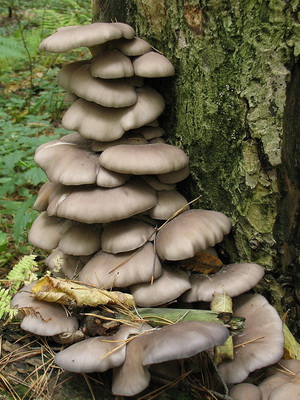
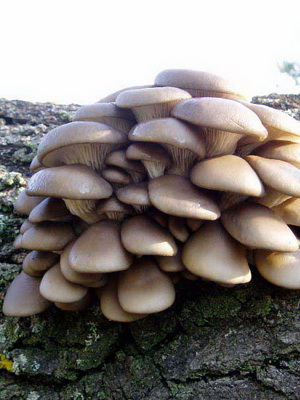
Fruits in spring and autumn. It can be grown on stumps or lumps, but large yields are obtained only on loose substrate from wood chips, straw or husks of sunflower in plastic bags. Due to the high growth rate, oyster mushroom mycelium is able to capture and absorb the substrate faster than mold. Therefore, oyster mushroom can be grown without heat treatment of the substrate or apply simple methods of pasteurization.
Another representative of the tree mushroom group - shiitake (Lentinula edodes).
In this photo you can see that the tree mushroom grows on oak or other hard wood:
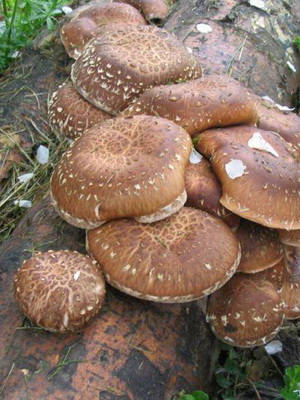
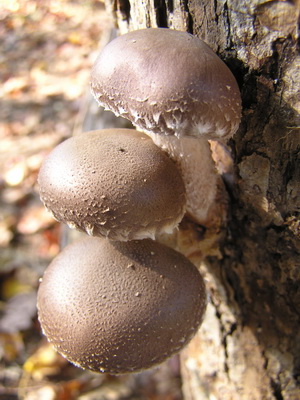
Before seeding, it requires sterilization of the substrate in an autoclave or steam treatment at + 95 ... + 100 ° С. The mushroom is grown on oak trunks with a diameter of up to 15 cm.Also, this tree mushroom grows where there is a lot of loose substrate from oak wood chips, shavings or sawdust with the addition of grain. Shiitake has a competitive advantage over molds and other mushrooms on oak, as its mycelium secretes the tannase enzyme, which decomposes tannins.
Representatives of the litter group of mushrooms
Speaking about what ecological groups of mushrooms are, it is especially worth highlighting the litter mushrooms that grow in the forest on the litter, in the fields on straw, in the garden on the mulch.
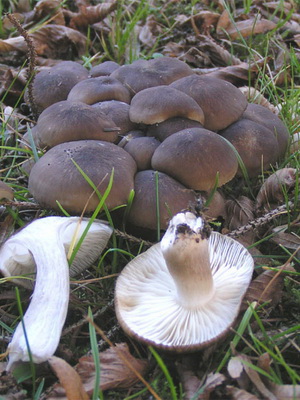
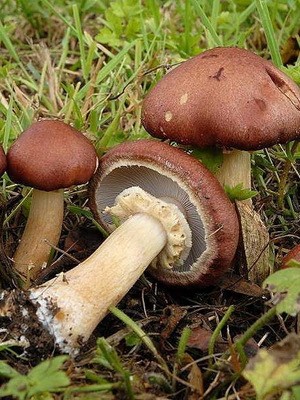
Typical representatives of litter mushrooms are purple rowing (Lepista nuda), ring (Stropharia rugoso-annulata), straw mushroom (Volvariella volvacea) For the garden, these are the most useful mushrooms. The litter-box of the litter willingly masters the beds mulched with sawdust or wood chips. It is believed that they do not form mycorrhiza with plants, but help to supply plants with water. After rain or watering, the mycelium of the fungi in the upper soil layer collects a large amount of water. This water remains accessible to plants for a long time. Studying the distribution of water on a bed with ringed mycelium, it can be seen that after irrigation of a small section of the bed, the mycelium distributes water evenly over the entire area. Ringworm mycelium actively penetrates into the root zone of plants growing on the bed and contributes to the preservation of water there in the absence of rain and irrigation.
Mushrooms of this ecological group have strong immune defense, since in the forest litter their mycelium is surrounded by molds and other microorganisms. Therefore, they can grow in an unsterilized substrate. In 2015, on such a bed of 3x10 m in size, the annulus formed from 10 to 40 mushrooms per day, during which fruiting waves are visible.

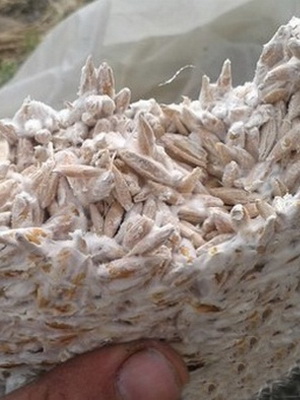
For the vegetative propagation of litter fungi on a non-sterile substrate, grain mycelium cannot be used. Molds and bacteria located in the substrate capture the grain before the mycelium of the litter fungus grows. In addition, the cereal mycelium of the ringworm and other litter fungi is poorly stored, because carbon dioxide is not a complete protection for him. A sterilized substrate can be inoculated with cereal mycelium, but this greatly complicates the technology. It is easier to use non-sterile substrate mycelium for the reproduction of these fungi - a piece of a bed developed by the mycelium.
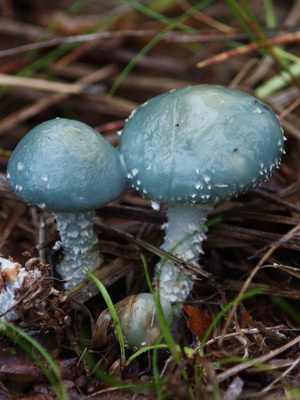
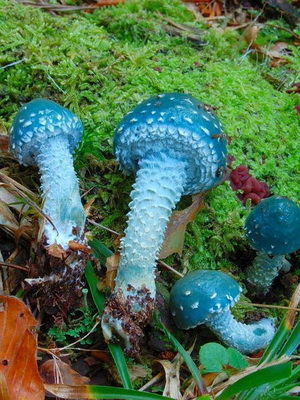
Litter mushrooms are easily sown with spores on moistened mulch from pine needles or from wood chips. Litter Mushroom blue ring (Stropharia aeruginosa) can propagate self-seeding on a bed with phlox. At the same time, phloxes grow well, and the mycelium of the fungus was visible during their transplantation.
You can make a bed for planting a ring from a mixture of birch chips with pine needles. On this bed, already partially mastered by a ring, purple rows can grow by themselves.
Humus mushroom group
The mycelium of fungi belonging to this group is located in the humus layer under the litter.
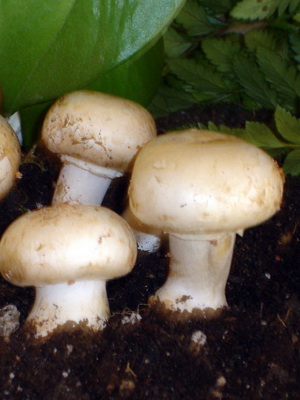

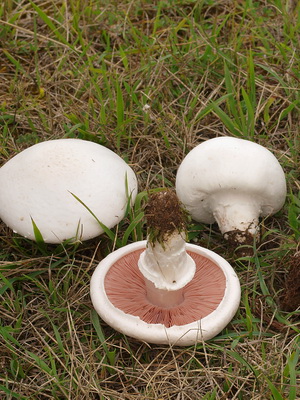
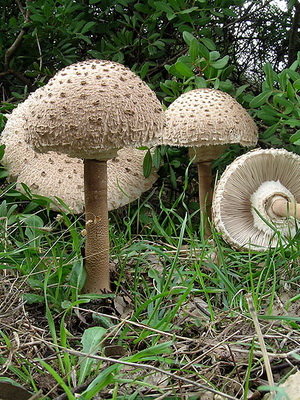
The most interesting humus mushrooms are those sold everywhere in stores. bicuspid champignon (Agaricus bisporus) growing on the sidewalks two-ring champignon (Agaricus bitorquis), champignon meadow (Agaricus campestris) and large motley umbrella (Macrolepiota procera) Humic mushroom mycelium completes the conversion of wood litter to soil humus.
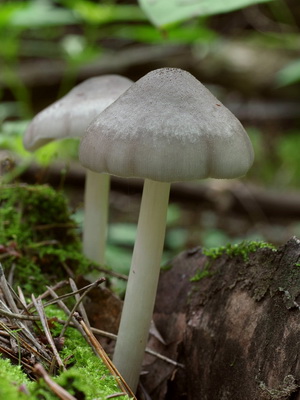
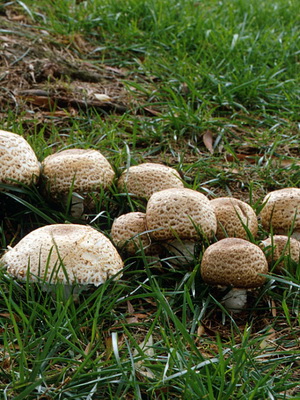
The main characteristic of this ecological group of fungi is the inability of enzymes to break down cellulose. However, they can use for nutrition compounds that remain in the soil after litter fungi work. That sowed on a bed with a ring willow (Pluteus salcinus), champignon august (Agaricus augustus) and some dung beetles, it is hoped that after the ringworm it will be possible to plant other humus mushrooms on it.
Suitable for humus fungi and the substrate created by aerobic bacteria and actinomycetes in compost heaps. Such a substrate, consisting of a mixture of straw and farm animal manure, is called champignon compost.On champignon compost, you can grow not only champignon, but also other humus mushrooms.
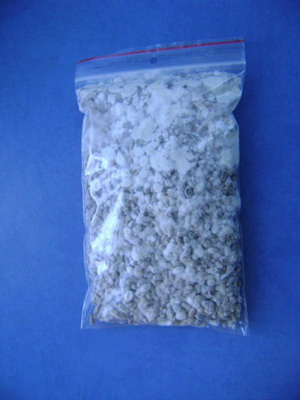
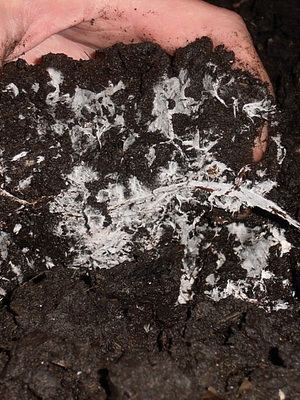
For vegetative propagation of humus mushrooms produce grain mycelium, but it is poorly stored and survives. Compost mycelium made on champignon compost as a carrier is more reliable. Non-sterile compost mycelium is champignon compost overgrown with the necessary humus mushroom. To make sterile compost mycelium, a pure culture of the fungus from a test tube is transferred to a champignon compost sterilized in an autoclave. Previously, such a compost champignon mycelium was produced by the Zarechye state farm. Everyone could make a simple compost of straw and horse manure and grow champignons in the basement. I recall my experience in growing champignon on an unglazed loggia. There, for more than a year, a bank bought with “Zarechye” was kept with compost champignon mycelium. A liquid formed in the jar, which was poured as fertilizer into a box of 0.5 m3, where a tomato grew on a mixture of sphagnum and horse manure. Two months later, champignons grew with a continuous carpet. With cereal mycelium, everything is much more complicated. A reliable start to the grain mycelium requires high-quality compost. How to make such compost is described in the sections on the cultivation of mushrooms.
Humus mushrooms include mushrooms growing near stables and livestock yards on nitrogen-enriched plots of land or on heaps of straw.
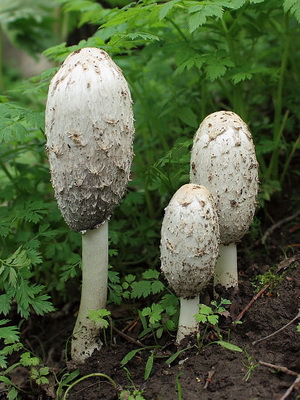
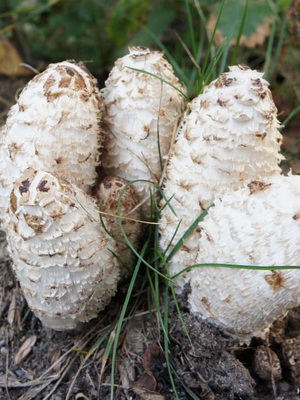
Most interesting white shaggy dung beetle (Coprinus comatus) Its rather large fruiting bodies grow and last only a few days, after which the fungus begins to blur into a black mass with spores. In its young state, white shaggy dung beetle is very tasty fried, and in terms of sugar content it surpasses other mushrooms.
What mushrooms form mycorrhiza with plants
There are fungi that form mycorrhiza with plants, they are called mycorrhiza.
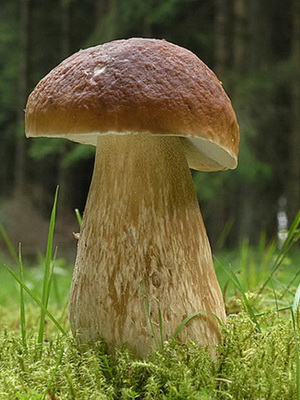
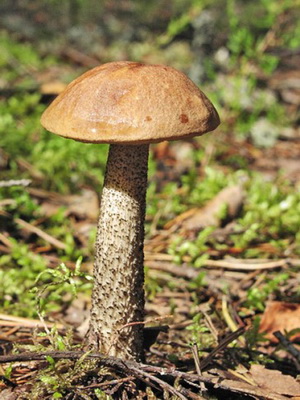
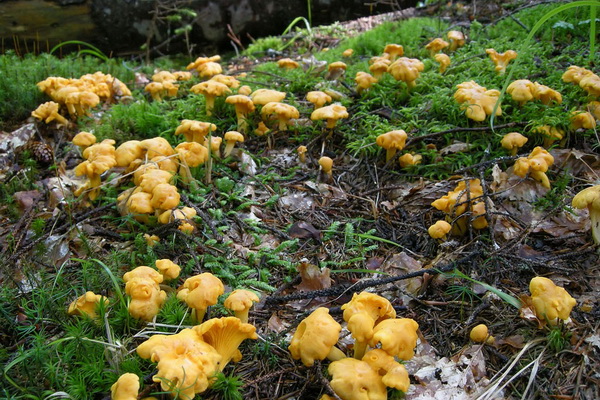
Porcini (Boletus edulis), boletus (Leccinum scabrum) and chanterelles (Cantharellus cibarius) Is a typical mycorrhizal fungi living in symbiosis with trees. This fungus forms mycorrhiza with tree roots, such a community is mutually beneficial for both organisms. These mushrooms supply the tree with water, trace elements and phosphorus compounds, which are extracted from the earth with the help of their enzymes. The host tree controls the development of mycorrhizal fungi, supplying them with glucose and other simple sugars through mycorrhiza.
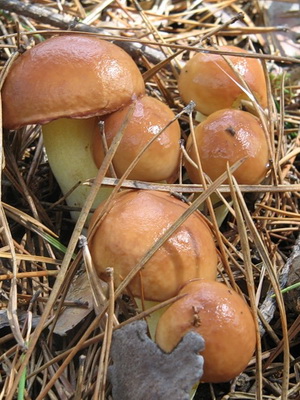
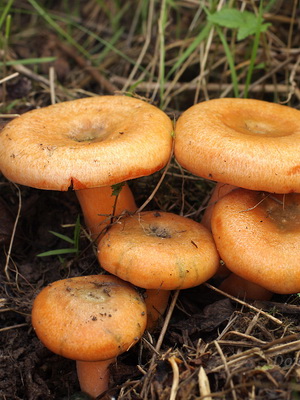
Butterflies (Suillus granulatus) and delicious saffron milk cap (Lactarius deliciosus) grow under young pine trees. They do not require thick forest litter, they can grow even on a mown lawn. For ceps, boletus and boletus, a layer of fallen leaves or needles is desirable. So, white mushroom is most often found in a birch forest under an oak tree. The oak form of the porcini mushroom forms mycorrhiza with oak, birch - with birch, but for its development the porcini mushroom chooses a place where there is a significant layer of birch leaves, the moisture in which is preserved due to the surface layer of oak leaves. Birch leaves rot in one season, and oak leaves last for two years.

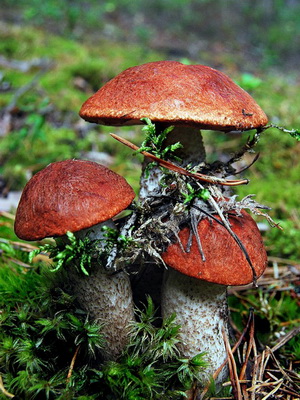
Another representative of the mycorrhizal fungi group is the aspen form. boletus (Leccinum aurantiacum). This fungus creates mycorrhiza with plants such as aspen and birch. But it happens that these boletus crawl out of a thick coniferous litter under an old pine, and neither aspens nor birches are visible. Only excavations have shown that under the pine tree passes a thick aspen root, connecting very young aspen sprouts.
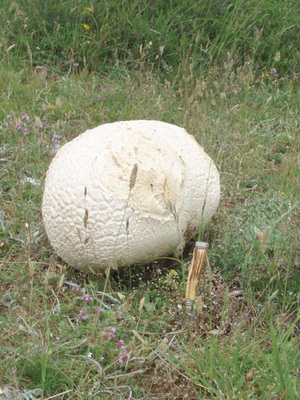
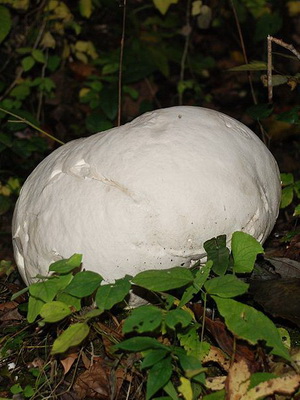
Some mushrooms in the literature are described as not mycorrhizal, but their study raises doubts. So, giant raincoat (Langermania gigantea) could not be transplanted from the forest to either the substrate for the ringworm or champignon compost. Observing its growth in different places, it always grows next to bird cherry. Maybe he forms mycorrhiza with her? Transplant along with bird cherry, now wait for the result.
Of great importance for the growth of mycorrhizal fungi is lighting and air movement in the forest.In a grove of densely growing young birches, birch trees grow, as a rule, at the edge of the southern side of the grove. There is more light at the edge and stronger convective air currents that contribute to fruiting. Ceps in such a grove do not grow. It needs thinning to increase the illumination of the soil and for better air movement.
